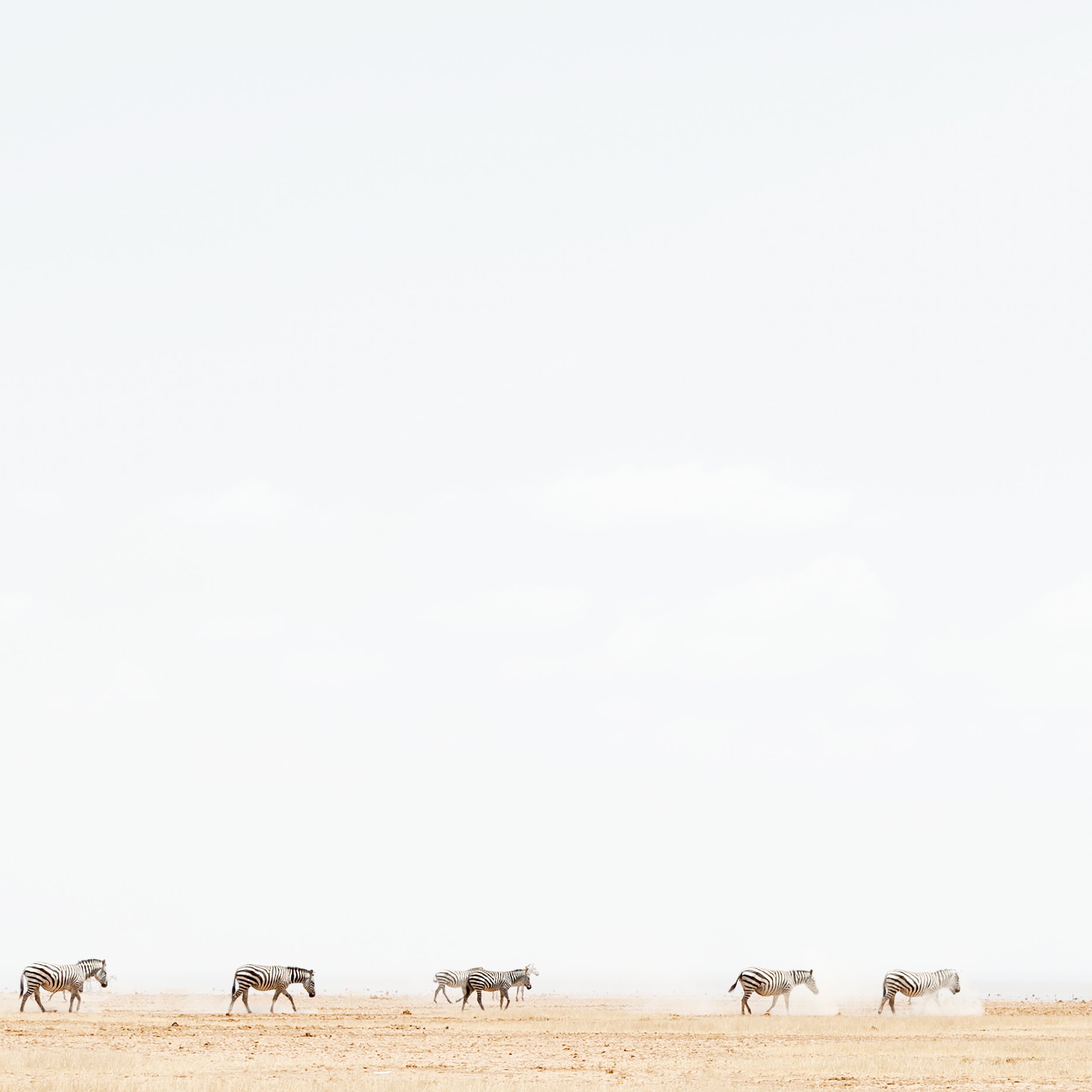Amboseli: Quiet Plains
Struck by the landscape as much as the beauty of the wildlife, I was inspired to show these animals in the vast context of their majestic surroundings. The elephant, wildebeest, giraffe and zebra move across the immense plains of Amboseli with deliberate, quiet intent, their stride kicking up the dry dust. During midday the haze of the heat visually abstracts their form. In the evening they are enveloped in a surreal purple and blue light.
Sitting in the truck, crouching, or lying in the dirt photographing the animals was a breathtaking experience for me. I felt childlike excitement being so close to the wildlife in this remote land and hoped that what seemed like the overpoweringly loud sound of my shutter would not interrupt the sacred stillness we shared.
Visiting Africa touched my soul. The land and wildlife is both profoundly beautiful and yet extremely fragile. The wildlife conservation areas protect the vulnerable animals against the ever prevalent and increasing dangers of poaching. The impact on the elephant alone is daunting, the facts horrifying. An African elephant is poached every 15 minutes (1) and in 2014 at least 30,000 African elephants were killed. Approximately 400,000 African elephants still survive in the wild and at the current rates African elephants could vanish in the next 15-20 years. (2)
I have chosen to support, with profits from this work, the The Tsavo Trust — a new project which has been set up to protect the great tusker elephants of Tsavo (Tsavotrust.org). These elephants are genetically disposed to extraordinarily heavy ivory which makes them very vulnerable.







